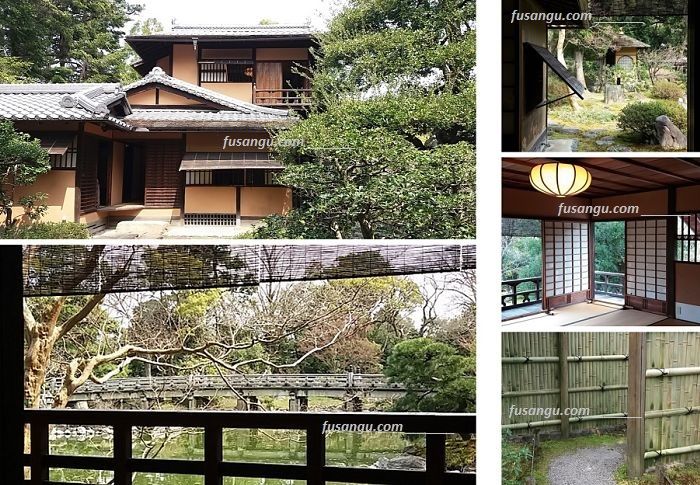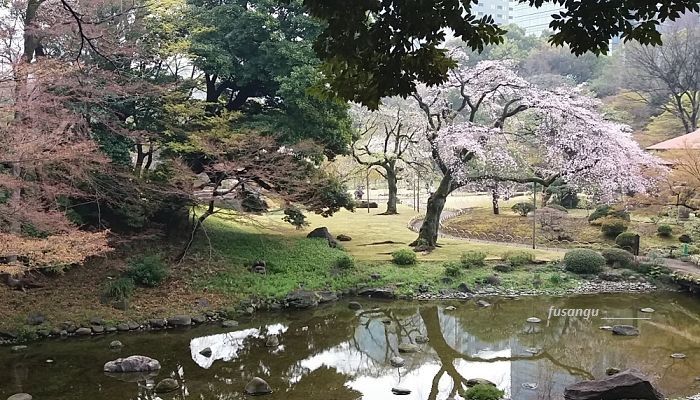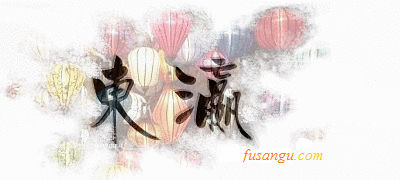
Ten days are a short period of time but they can be enough for the first journey to Japan as there is plenty of room for arranging an itinerary between Tokyo and Kyoto, the nation’s main destinations.
In this page we briefly outline a selection of ten-day itineraries along the Tokyo-Kyoto route. All itineraries are compatible with the use of a 7-day Japan Rail Pass ticket.
Contents
-
First journey to Japan (choice of the itinerary, main destinations, side trips)
-
Recommended 10-day itineraries (Kyoto and Tokyo; inclusion of a third major destination, one-day excursions from Tokyo and Kyoto)
-
Where to stay (accommodation in Tokyo, Kyoto, Kanazawa, Hiroshima)

Ten days in Japan: choice of the itinerary
As already mentioned, a first journey to Japan should include both Tokyo, the current capital, a modern metropolis that offers images of a nation projected into the future with solid roots in the past, and Kyoto, the spiritual heart of the nation, a trove of sacred sites and cultural treasures. We feel that you also programme a visit to Nara, ancient capital endowed with an outstanding cultural heritage, much of which reflects the beauty of Tang China and its influence over ancient Japan. Nara can easily be visited with a one-day excursion from Kyoto.
In our opinion, these three cities should be the core of any 10-day first journey to Japan. While it would be perfectly reasonable to limit the programme to these three cities, it is still possible to add one more major destination and arrange one or two side-trips.
The programmes described below do not contemplate major natural destinations which, in our opinion, should be considered only for second-time journeys or longer itineraries.
Nevertheless, either from Tokyo or Kyoto it is possible to organise visits to a few beautiful towns set in majestic natural landscapes in the Kanto and Kansai regions. These can be arranged as one-day excursions.
All of the itineraries outlined below can easily be organised independently, without having to resort to the support of a travel agency.
Ten days in Japan: recommended itineraries
Tokyo and Kyoto are the two major destination for a 10-day itinerary in Japan. Both cities deserve long stays, ideally of at least 3-4 days. In view of this, we suggest you choose to devote an entire week, 7 days, to these two destinations.
Depending on your interests and inclinations, you may opt for a longer stay in Tokyo, if you are more interested in modern Japan, or in Kyoto, if you are fascinated with ancient and traditional culture and art.
The remaining 2-3 days can be used for side-trips.
You should take into account that transfers between Tokyo and Kyoto can take up to two half days. If you are on a budget and you are comfortable with such a tough way of travelling, you can opt for night transfers by bus. This will allow you to save time and money.
Here are the suggested itineraries:
Itinerary 1: Tokyo, Kyoto with side-trips from both cities;
Itinerary 2: Tokyo, Kanazawa, Kyoto
Itinerary 3: Tokyo, Kyoto, Hiroshima
Itinerary 4: Tokyo, Takayama, Kanazawa, Kyoto
We assume that Narita Airport (near Tokyo) is the point of arrival and departure. Another option is to enter and exit the country through Kansai Airport (near Osaka and Kyoto).
If you travel from Asia you may also consider other points of entry such as the airports of Hiroshima, Nagoya and Okayama.
Itinerary 1: Tokyo and Kyoto
If you do not feel comfortable with tight schedules and enjoy slow travelling and the possibility of improvising and letting the journey lead you, you may choose to plan to visit only Tokyo and Kyoto. You can allocate time in many different ways. We suggest spending 4 days in Tokyo and 6 days in Kyoto (or the wider Kansai Region area, which includes Osaka, Nara, Kobe and many other destinations).
Transfers between the two cities take around 3 hours. Therefore, if you travel in the early morning or late afternoon, you will not waste time.
From both cities you can easily arrange side-trips. All transfers can be made by train or by bus. You can also join group tours, which are getting cheaper and cheaper.
As for day-trips, there is plenty of choice:
-
From Tokyo: Nikko, Kamakura, Hakone,Mount Fuji and the Five Lake Region
-
From Kyoto: Nara, Osaka, Himeji, Uji, Mount Koya
How to organise the transfers
If you choose a round trip flight itinerary (entry and exit through the same airport, typically Narita Airport), it would pay off to make use of a 7-day Japan Rail Pass ticket. This has to be activated on the fourth day of the journey, so as to cover the transfers of the last 7 days of the itinerary:
-
Tokyo-Kyoto: (by shinkansen, Hikari)
-
Excursions from Kyoto: (such as Kyoto-Osaka, Kyoto-Nara, Kyoto-Himeji; transfers between Kyoto and Koyasan are covered by the specific tourist ticket, Koyasan World Heritage Pass)
-
Kyoto-Tokyo: (by shinkansen, Hikari)
-
Tokyo-Narita Airport: (by N’EX, Narita Express, the fastest option)
Itinerary 2: Tokyo, Kanazawa and Kyoto
If you are into traditional culture and strive to see images of ancient Japan, you would struggle to count out a visit to Kanazawa. Together with Kyoto, Kanazawa is one of the few major cities of Japan that were not ravaged during WWII. As such, the city boasts a unique historical centre that comprises a few neighbourhoods, the chaya districts, that retain the beauty and harmony of the traditional architecture. Narrow alleys, wooden buildings, a quaint atmosphere, abundance of green areas and sacred sites, Kanazawa is a fascinating city where you could easily spend 2-3 days. A full day can be spent for visiting Kenroku-En, a magnificent landscape garden, the Kanazawa-Jo, an elegant castle, and one chaya district. A half day can be spent to visit Nagamachi, the samurai district.
Kanazawa is located in the Chubu Region, which lies between Kanto and Kansai. This means you can visit Kanazawa as an intermediate destination along the journey between Tokyo and Kyoto. Moreover, you can take advantage of a new pass, which covers transfers between Tokyo, Kansai through Hokuriku Region (where Kanazawa is located). You can allocate time in many different ways. We suggest spending 3 and a half days in Tokyo, 1 and a half days in Kanazawa, and 5 days in Kyoto (or the wider Kansai Region area, which includes Osaka, Nara, Kobe and many other destinations).
As for day-trips, we suggest the following destinations:
-
From Tokyo: Nikko or Kamakura
-
From Kyoto: Nara, Osaka, Himeji, Uji, Mount Koya
How to organise the transfers
If you choose a round trip flight itinerary (entry and exit through the same airport, typically Narita Airport), it would pay off to make use of a 7-day Hokuriku Japan Rail Pass ticket. This is cheaper than the regular 7-day nationwide Japan Rail Pass.
The pass has to be activated on the fourth day of the journey, so as to cover the transfers of the last 7 days of the itinerary:
-
Tokyo-Kanazawa: (by shinkansen)
-
Kanazawa-Kyoto: (by limited express)
-
Excursions from Kyoto: (such as Kyoto-Osaka, Kyoto-Nara, Kyoto-Himeji; transfers between Kyoto and Koyasan are covered by the specific tourist ticket, Koyasan World Heritage Pass)
-
Kyoto-Tokyo: (by limited express and shinkansen, through Kanazawa)
-
Tokyo-Narita Airport: (by N’EX, Narita Express, the fastest option)
The only drawback is that all Tokyo-Kyoto transfers require passing through Kanazawa, which means you cannot travel along the direct Tokyo-Kyoto Tokaido Shinkansen Line. This indirect transfer takes around 5 hours instead of the typical 3 hours of the direct route.
Itinerary 3: Tokyo, Kyoto and Hiroshima
If you wish to visit Hiroshima, you can still do this on a 10-day journey, even though this requires making the schedule quite tight. You can allocate time in many different ways. We suggest spending 3 and a half days in Tokyo, 2 days in Hiroshima and Miyajima and 3 and a half days in Kyoto.
Transfers between the Hiroshima and Kyoto take around two and a half hours. Therefore, if you travel in the early morning or late afternoon, you will not waste time. The longer Tokyo-Hiroshima transfer takes around 5 hours and it does take a half-day. The final Kyoto-Tokyo transfer takes around 3 hours, which makes it possible to enjoy a final full day in Kyoto.
As the schedule is tight we suggest considering only the following day-trips:
-
From Tokyo: Nikko or Kamakura
-
From Kyoto: Nara
Along the transfer between Kyoto and Hiroshima you may add stops at Okayama, where you can visit the Koraku-En Garden and Himeji, small town famed for its huge and majestic castle.
How to organise the transfers
If you choose a round trip flight itinerary (entry and exit through the same airport, typically Narita Airport), it would pay off to make use of a 7-day Japan Rail Pass ticket. This has to be activated on the fourth day of the journey, so as to cover the transfers of the last 7 days of the itinerary:
-
Tokyo-Hiroshima: (by shinkansen, Hikari and Sakura, a transfer is required at Osaka or Kobe)
-
Hiroshima-Kyoto: (by shinkansen, Sakura)
-
Excursions from Kyoto: (such as Kyoto-Osaka, Kyoto-Nara)
-
Kyoto-Tokyo: (by shinkansen, Hikari)
-
Tokyo-Narita Airport: (by N’EX, Narita Express, the fastest option)
Itinerary 4: Tokyo, Takayama, Kanazawa and Kyoto
If you travel to Japan in winter you may want to see the snow. In this case beside Kanazawa, which lies at the centre of the so called Yukiguni (“the land of snow”) you may add a short stay in Hida-Takayama, a small town where you can appreciate beautiful traditional vernacular architecture as well as a few shrines and a museum. Takayama is also an ideal starting point for an excursion to Shirakawa-go, a picturesque village characterised by old wooden houses built in a distinctive architectural style. Their roofs evokes the shape of joint hands in the act of praying. The small village still retains the serene and peaceful atmosphere of a world where time flows slowly in never ending cycles.
An itinerary of this sort is kind of demanding and it requires a tight schedule. We suggest spending 3 and days in Tokyo, 1 and a half days in Takayama (including a day-trip to Shirakawa-go), 1 and a half days in Kanazawa and 3 and a half days in Kyoto.
Two half days are absorbed by the longest transfers, i.e., Tokyo-Takayama and Takayama-Kanazawa. You can travel between Kanazawa and Kyoto and between Kyoto and Tokyo in the late afternoon, which will allow you to save time.
As for the other day-trips, we suggest considering the following destinations:
-
From Tokyo: Nikko or Kamakura
-
From Kyoto: Nara
How to organise the transfers
If you choose a round trip flight itinerary (entry and exit through the same airport, typically Narita Airport), it would pay off to make use of a 7-day Japan Rail Pass ticket, the regular nationwide one. The pass has to be activated on the fourth day of the journey, so as to cover the transfers of the last 7 days of the itinerary:
-
Tokyo-Takayama: (by shinkansen and ordinary train, via Nagoya)
-
Takayama-Kanazawa: (by ordinary train and shinkansen, via Toyama)
-
Kanazawa-Kyoto: (by limited express)
-
Excursions from Kyoto: (Kyoto-Nara or Kyoto-Osaka)
-
Kyoto-Tokyo: (by limited express and shinkansen, through Kanazawa)
-
Tokyo-Narita Airport: (by N’EX, Narita Express, the fastest option)
How to organise the transfers
Travelling by train is by far the best way to get around for the itineraries presented above. A cheaper but much less comfortable option is offered by night buses.
Travelling by plane can be a reasonable option only for transfers between Tokyo and Hiroshima.
Japan Rail Pass tickets
After the sharp increase in prices, nation-wide Japan Rail Pass (particularly the 7-day pass) no longer pay off for ordinary itineraries like the ones described in this page. You may want to consider the opportunity of buying regional passes, depending the itinerary of your choice.
By far, the best regional pass for journeys along the Tokyo-Kyoto route is the JR Hokuriku Arch Pass, which allows for unlimited travel between Tokyo, Kyoto, Osaka via Kanazawa for 7 consecutive days.
Multi-city flight itineraries
If you find convenient flight itineraries with entry through Tokyo and exit through Osaka you will not need to buy a JR Pass.
Where to stay
All cities mentioned in this page offer a wide range of accommodation, including hostels, cheap hotels, traditional inns and guest houses catering for families and groups.
In general, Kanazawa and Takayama offer the best deals if you are seeking the unique experience of staying in a ryokan, the Japanese traditional inn, in our opinion a cultural experience that should not be missed out on.
In Tokyo
For stays in Tokyo of 3 or 4 days we suggest you find accommodation in a neighbourhood conveniently served by the subway and railway networks. Popular choices are the following:
-
Asakusa, the heart of the old shitamachi, a quaint neighbourhood well served by connections by train with Narita Airport, the main tourist areas and the centre. Trains to Nikko depart from Asakusa Station. In Asakusa there is plenty of hostels, cheap hotels and a few inexpensive traditional inns;
-
Ueno, the best location as for convenience of the location, important transportation hub, conveniently served by the Yamanote loop line;
-
Shinjuku, the core of the modern city, a primary night life centre;
Other areas to be considered are Akasaka, a quiet area in the centre, well connected to all major districts in Tokyo, and Edogawa, a little farther from the centre, ideal for those who seek cheaper options.
In Kyoto
For stays in Kyoto of 3-5 days we suggest you choose among the following locations:
-
Kyoto Station, near the central station, the basic option, suitable to those who value convenience of the position;
-
Gion (Higashiyama), in the heart of the historic city, a fascinating context, the best possible choice for those who want to enjoy exploring the city at dawn or sunset, free from the inconveniences brought by large crowds. As you can easily imagine, such a choice requires advance booking and in general it implies higher costs;
-
Kamigyo, a quaint neighbourhood of the ordinary city, far from the tourist bubbles but close to many attractions and perfectly served by the main bus routes. This is an ideal choice for those who want to experience staying at a cheap guest house. Most of structures located in Kamigyo are family run and offer a genuine cultural experience. Many cater to families. If you stay here you can also get around by bicycle, a good way to explore the area and the rest of the city.
In Kanazawa
In Kanazawa you can find good hotels and traditional ryokans around Higashichaya, atmospheric traditional district where you will enjoy amazing night walks. A good second choice, more practical, is to stay near Kanazawa Station.
In Takayama
Takayama is a very small town. There is no need to focus on any specific area. Choice of a place to stay at will essentially depend on the quality of experience that you want to have.
In Hiroshima
There is plenty of hostels and hotels near Hiroshima Station, perfect location for a short stay in the city. A pleasant alternative is to spend a night in Miyajima, where you can find very good, albeit quite expensive, ryokan.
Related articles:
Itineraries in Japan: 5 days | 7 days | 14 days
First journey to Japan: Ten-day classic itinerary

